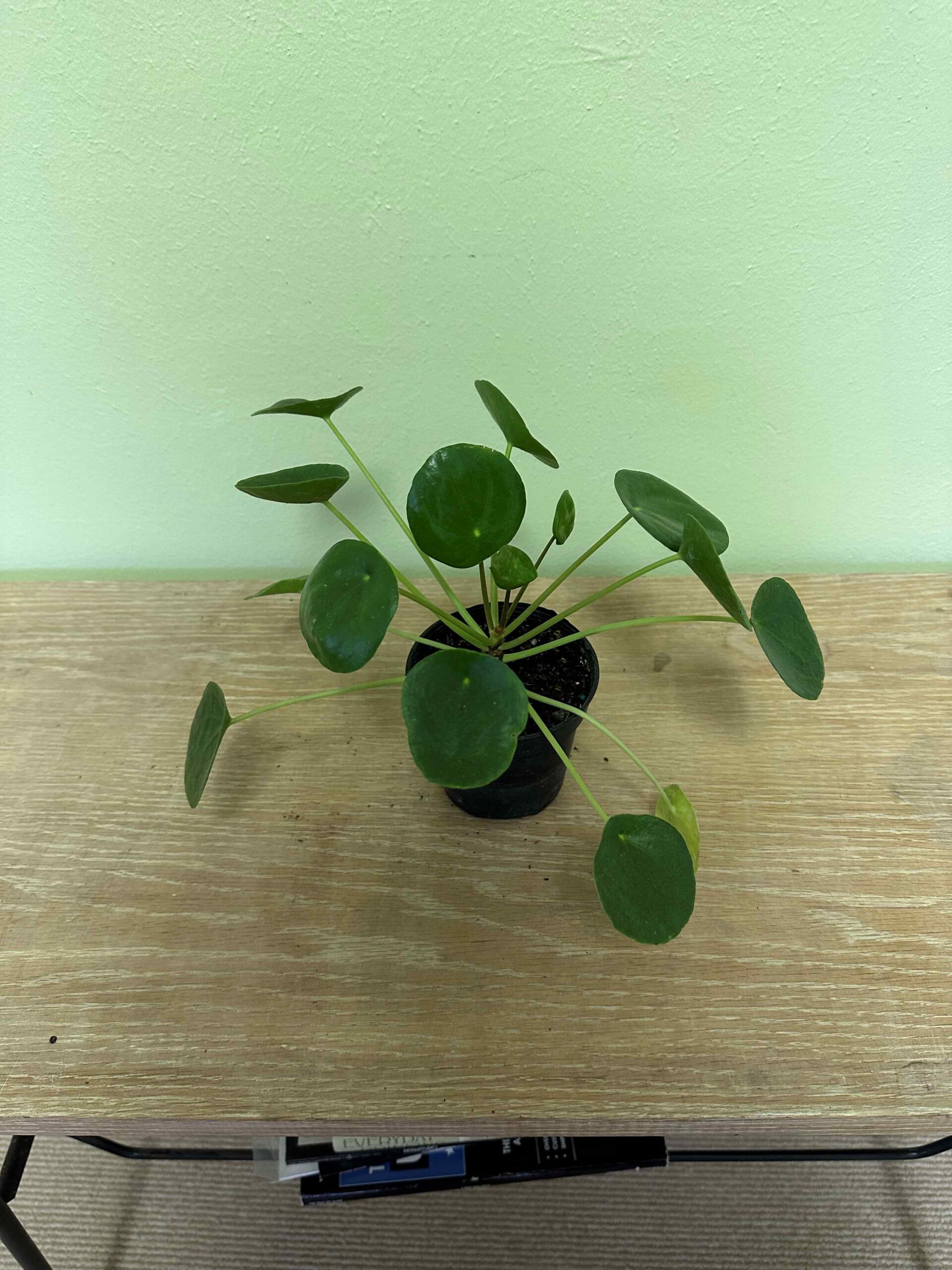Pilea peperomioides, often referred to as the pancake plant, Chinese money plant, coin plant, or UFO plant, is a popular houseplant thanks to its attractive coin-shaped foliage and ease of care. This flowering perennial in the nettle family (Urticaceae) is native to southern China, growing naturally along the base of the Himalayan mountains.
Pilea Peperomiodes “Chinese Money Plant”
$18.00
$18.00
In stock
Related products
-
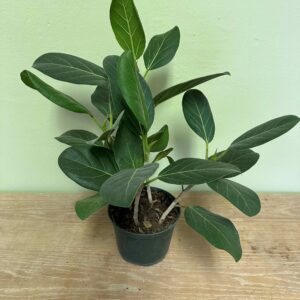 Add to cart
Add to cartFor those who have loved and lost the finicky fiddle leaf fig, we introduce ficus Audrey (Ficus benghalensis). A close relative of the fiddle leaf fig, ficus Audrey is easier to grow and care for indoors and has a similar growth habit and appearance. However, it can be distinguished from the fiddle leaf by its smaller,…
-
 Add to cart
Add to cartHow to care for your Jade Use these instructions to care for a Jade. This guide will tell you how to water a Jade; its light, temperature, humidity preferences and any additional care it might need to help it grow. LIGHT Place your Jade Plant in a direct or bright indirect light. It will not…
-
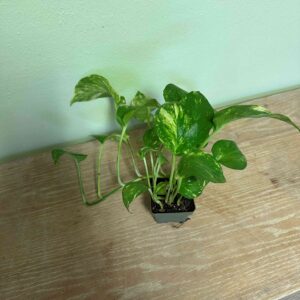 Add to cart
Add to cartHow to Care for Pothos Plants Keep pothos plants in a warm location; room temperature is ideal. If exposed to regular drafts or colder temperatures, the plant’s growth can be affected. Place pothos in bright, indirect light. They will tolerate low light but will not grow as vigorously and may lose some or all of the variegation in their leaves….
-
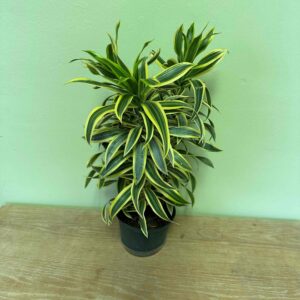 Add to cart
Add to cartSong of India requires bright, indirect sunlight for at least four hours per day. These conditions keep the foliage vibrant but too much sun is also harmful and can cause leaf scorch. Soil Song of India is not very particular about soil. A peaty, well-drained potting mix is best. Remember that more peat in the plant’s soil…
-
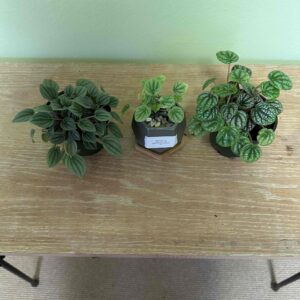 Read more
Read moreThe genus, in the peppercorn family Piperaceae, is home to over a thousand species of diverse plants—including popular houseplants such as the Watermelon Peperomia, Ripple Peperomia, Baby Rubber Plant, and more. The family Piperaceae belongs to an ancient lineage of flowering plants known as Magnoliids. These plants are mostly tropical, and are the source of…
In stock
Related products
-
 Add to cart
Add to cartHow to Care for Pothos Plants Keep pothos plants in a warm location; room temperature is ideal. If exposed to regular drafts or colder temperatures, the plant’s growth can be affected. Place pothos in bright, indirect light. They will tolerate low light but will not grow as vigorously and may lose some or all of the variegation in their leaves….
-
 Add to cart
Add to cartFor those who have loved and lost the finicky fiddle leaf fig, we introduce ficus Audrey (Ficus benghalensis). A close relative of the fiddle leaf fig, ficus Audrey is easier to grow and care for indoors and has a similar growth habit and appearance. However, it can be distinguished from the fiddle leaf by its smaller,…
-
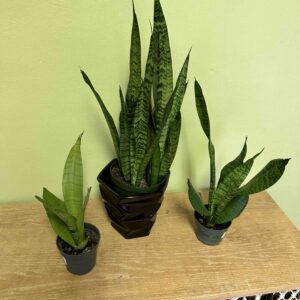 Read more
Read moreSanseveria was named after the person who invented colored fireworks. The Sanseveria is one of the best plants to clean indoor air. According to Nasa, it’s a top-notch air purifier by removing toxins such as toluene, nitrogen oxides, xylene and formaldehyde from the air. Especially people with allergies benefit from this. Putting about 9 Sanseverias…
-
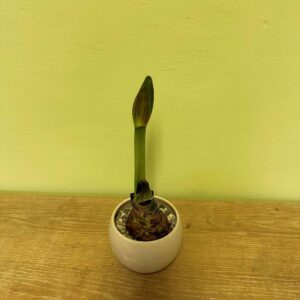 Add to cart
Add to cartAmaryllis may be purchased as bare or planted bulbs, and are prized for their exotic trumpet-shaped flowers born on 1- to 2-foot leafless stalks or scapes. They add dramatic color to homes and gardens and make wonderful gifts to gardeners from beginners to experts. Native to Africa, the genus Amaryllis comes from the Greek word amarysso, which…

